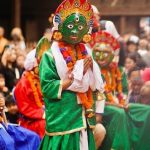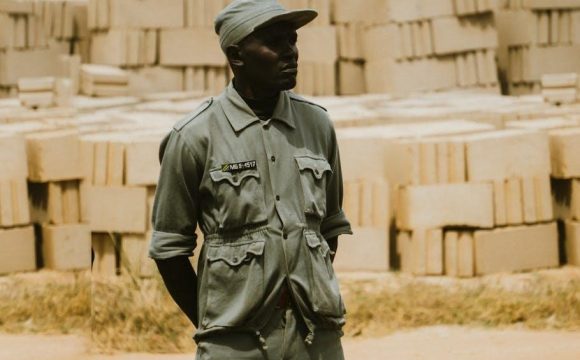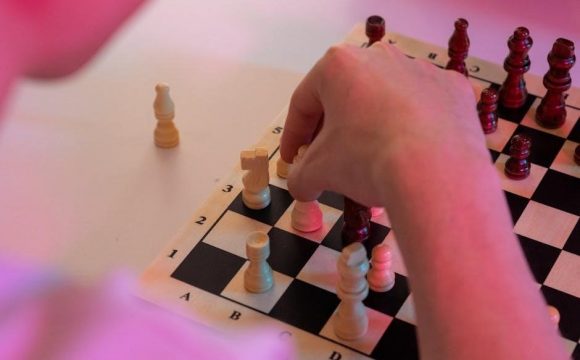Explore William Golding’s timeless novel, Lord of the Flies, a gripping tale of young boys stranded on an island, delving into humanity’s duality and societal influences.
Overview of the Novel
Lord of the Flies, written by William Golding, tells the story of a group of young boys stranded on a remote island after a plane crash. With no adult supervision, the boys attempt to govern themselves, leading to a descent into chaos and savagery. The novel explores themes of human nature, civilization, and the effects of isolation. Through their struggles, Golding examines how societal norms crumble, revealing the innate darkness within humanity. This gripping tale has become a classic in literature, offering profound insights into the human condition and the fragility of order. Its timeless relevance continues to resonate with readers worldwide.
Importance of the Novel in Literature
Lord of the Flies holds a significant place in literary history for its profound exploration of human nature. William Golding’s work challenges the notion of inherent human innocence, presenting a bleak yet realistic portrayal of society’s collapse. The novel’s themes of savagery versus civilization, power struggles, and the effects of fear resonate universally, making it a cornerstone of modern literature. Its allegorical structure and vivid symbolism have inspired countless analyses and discussions; This masterpiece continues to influence authors and educators, solidifying its relevance in understanding human behavior and societal dynamics. Its enduring popularity underscores its importance as a thought-provoking and deeply unsettling work of fiction.
Structure of the Reading Guide
This reading guide is designed to provide a comprehensive understanding of Lord of the Flies. It begins with an introduction to the novel, followed by a detailed plot summary and analysis. Major themes such as human nature, fear, and power struggles are explored in depth. The guide also includes character analyses of key figures like Ralph, Jack, and Piggy. Symbolism, such as the conch shell and the beast, is examined to uncover deeper meanings. Study tips, key quotes, and essay topics are provided to aid students in their analysis. The guide concludes with reflections on the novel’s significance and relevance today.

Plot Summary and Analysis
Lord of the Flies by William Golding follows boys stranded on an island after a plane crash. Initially cooperative, their unity fades as power struggles emerge, fear intensifies, and civilization crumbles, revealing primal instincts. The novel traces their descent into chaos, culminating in tragic events that highlight humanity’s darker aspects.
The novel begins with a group of British schoolboys stranded on a tropical island after a plane crash. The story introduces key characters such as Ralph, the fair-haired leader; Jack, the power-hungry hunter; Piggy, the intelligent voice of reason; and Simon, the quiet, insightful boy. The setting is a lush, uninhabited island with dense jungles, rocky cliffs, and sandy beaches. The boys’ initial optimism and sense of adventure are palpable as they explore their new surroundings. The conch shell, a symbol of order, is discovered, and Ralph is elected leader, setting the stage for their attempt at civilization.
Rising Action: The Struggle for Power and Order
Tensions rise as Jack’s desire for hunting and power conflicts with Ralph’s focus on building shelters and maintaining order. The group’s fear of a mysterious “beast” escalates, leading to irrational decisions. Jack forms his own tribe, luring boys with promises of meat and freedom, while Ralph struggles to keep the remaining boys civilized. Piggy’s attempts to reason are ignored, and the conch shell’s authority wanes. The boys’ behavior becomes more primal, highlighting the fragile balance between savagery and civilization. This power struggle sets the stage for the novel’s tragic events.
Climax: The Death of Simon and the End of Innocence
The climax unfolds with Simon’s tragic death, marking the irreversible collapse of innocence. Simon discovers the truth about the “beast,” realizing it is just a dead pilot, but his attempt to share this revelation is met with chaos. In a frenzied ritual, the boys, consumed by fear and savagery, attack and kill Simon. This moment signifies the complete breakdown of moral restraint and the dominance of primal instincts. The conch shell, once a symbol of order, loses its power as the boys descend into chaos. Simon’s death embodies the loss of reason, innocence, and the final surrender to savagery.
Falling Action: The Hunt for Ralph and the Loss of Civilization
The falling action sees Ralph hunted by Jack’s tribe, as the island’s remnants of civilization crumble. Ralph, now isolated, flees through the jungle, narrowly evading capture. Jack’s savagery intensifies, using tribal rituals to rally his followers against Ralph. The group’s descent into chaos accelerates, with moral boundaries completely erased. The once-unified boys are now divided, with Ralph symbolizing the last shred of order. The island, once a place of hope, becomes a battleground, highlighting the rapid disintegration of societal norms and the overwhelming power of primal instincts. Civilization’s final threads are severed as fear and violence dominate.
Resolution: The Arrival of Rescue and Reflection
The resolution unfolds with the arrival of a naval officer, who rescues Ralph and the other boys from the island. The boys, now rescued, are met with the stark contrast of civilization, highlighting their descent into savagery. Ralph, reflecting on their experiences, grapples with the realization of humanity’s inherent darkness. The officer’s presence restores order, but the boys are left to confront the moral lessons of their time on the island. The novel concludes with a poignant reflection on human nature, leaving readers to ponder the fragility of civilization and the enduring impact of their journey.

Major Themes in Lord of the Flies
The novel explores human nature, civilization versus savagery, fear’s impact on behavior, power struggles, morality, and survival, revealing society’s influence on individual behavior and ethics.
Human Nature: Civilization vs. Savagery
In Lord of the Flies, William Golding explores the inherent duality of human nature, contrasting civilization with savagery. Ralph represents order and democracy, while Jack embodies primal instincts and the desire for power. The conch shell, a symbol of civility, gradually loses its significance as fear and chaos dominate. The boys’ descent into brutality, marked by hunting and tribal behavior, reveals how societal norms are fragile. The novel suggests that without external constraints, humanity’s darker tendencies prevail, highlighting the thin line between civilized behavior and primal savagery, a theme that resonates deeply in understanding human behavior and societal structures.
The Role of Fear and Its Impact on Behavior
Fear plays a pivotal role in Lord of the Flies, driving the boys’ actions and shaping their behavior. The mysterious “beast” embodies their collective terror, fostering paranoia and division. As fear intensifies, the boys’ civilized norms erode, leading to irrational decisions and violence. Jack exploits fear to manipulate others, while Ralph’s attempts to maintain order are undermined by growing dread. The novel illustrates how fear can destabilize communities, provoke aggression, and lead to the breakdown of morality. Golding uses fear as a catalyst to explore the darker aspects of human nature, revealing how it undermines rationality and fuels savagery.
Power Struggles and Leadership
The novel explores the dynamics of power and leadership through the contrasting characters of Ralph and Jack. Ralph, the elected leader, represents democracy and order, while Jack embodies authoritarianism and the desire for control. Their rivalry reflects the broader struggle between civility and savagery. Piggy’s intelligence and rationality are often overlooked, highlighting the tension between wisdom and brute strength. The conch shell, a symbol of democratic order, gradually loses its influence as fear and chaos escalate. Golding illustrates how leadership can either maintain or destroy order, revealing the fragility of authority in the face of human nature’s darker impulses.
Morality and the Influence of Society
The novel examines how societal norms shape moral behavior, suggesting that morality is not inherent but learned. The boys’ gradual descent into chaos reflects the erosion of societal influences. Ralph, representing civilization, struggles to uphold moral standards, while Jack’s actions reveal a primal disregard for ethics. Simon’s spiritual insights and Piggy’s rationality contrast with the group’s growing savagery, highlighting the tension between individual conscience and collective behavior. Golding illustrates that without societal structures, moral frameworks crumble, exposing humanity’s darker tendencies and the fragility of ethical behavior in isolation; This theme underscores the novel’s exploration of human nature’s duality.
The novel vividly portrays the collapse of order as survival instincts dominate. Initially, the boys attempt to create a civilized society, electing Ralph as leader and establishing rules. However, their focus shifts to hunting and immediate needs, leading to neglect of safety and governance. The conch shell, once a symbol of democracy, loses its power as fear and savagery prevail. The breakdown accelerates with the group’s division, as Jack’s tribe embraces primal behavior. This disintegration highlights the tension between survival and civilization, revealing how quickly societal norms can crumble when survival is at stake, and chaos takes over. The boys’ descent mirrors humanity’s vulnerability. This section provides in-depth analysis of the novel’s main characters, exploring their development and roles in illustrating key aspects of human nature and societal influence. Ralph, the protagonist, is initially chosen as the leader of the boys, embodying order and civility. He represents democracy through the conch shell, a symbol of fair speech; His priorities, like building shelters, reflect practicality and responsibility. However, as the novel progresses, Ralph’s leadership is challenged by Jack’s desire for power, leading to a decline in his authority. Despite his efforts to maintain civilization, Ralph is eventually hunted by the group, highlighting the fragility of order. His character symbolizes humanity’s capacity for good and the struggle against primal instincts, making him a central figure in exploring Golding’s themes of human nature and society. Jack Merridew, initially a choir leader, evolves into a symbol of savagery and power struggles. His obsession with hunting and killing pigs reflects his primal instincts and descent into chaos. Jack’s leadership is authoritarian, prioritizing hunting over building shelters, which clashes with Ralph’s civilized approach. The pig’s head, the “Lord of the Flies,” becomes a twisted offering to the beast, symbolizing Jack’s embrace of savagery and fear. His actions, including the death of Simon, showcase his ruthless pursuit of dominance. Jack’s transformation highlights the conflict between civilization and primal human nature. His fear of the beast ironically mirrors his own violent tendencies, making him the novel’s primary antagonist and a stark contrast to Ralph’s fading leadership. Piggy, the intelligent and rational character, represents logic and wisdom. Despite his physical limitations, he is the voice of reason, often providing practical solutions. His glasses symbolize clarity and knowledge, essential for the boys’ survival. Piggy’s belief in rules and the conch shell highlights his commitment to democracy. His death, a tragic loss, signifies the collapse of rationality and the rise of chaos. Piggy’s wisdom and loyalty to Ralph make him a crucial figure, emphasizing the importance of intelligence in maintaining order. Through Piggy, Golding underscores the fragility of civilization when reason is ignored, leaving humanity vulnerable to primal instincts. Simon, a quiet and introspective boy, embodies innocence and spirituality. His kindness and empathy set him apart, as he shows compassion for others, like Piggy. Simon’s discovery of the “beast” reveals the truth about fear and humanity, symbolizing his deeper understanding of reality. His solitary moments in the forest highlight his connection to nature and spirituality. Simon’s tragic death, at the hands of the boys he tried to save, marks the loss of innocence and the collapse of morality; His character serves as a moral guide, reminding the boys of their humanity in the absence of adult supervision. Roger, a quiet and initially unassuming boy, evolves into a symbol of unchecked cruelty. His sadistic nature emerges as he embraces chaos, becoming Jack’s enforcer and a key figure in the tribe’s descent into savagery. Roger’s actions, such as throwing stones at Henry and ultimately killing Piggy, highlight his complete disregard for morality. His lack of empathy and willingness to inflict pain underscore the novel’s themes of inherent evil and the breakdown of civilization. Roger’s character serves as a chilling reminder of how quickly humanity can deteriorate without societal constraints. Symbolism in Lord of the Flies includes the conch shell, representing democracy, the beast embodying fear, the island mirroring society, and the Lord of the Flies symbolizing savagery and corruption. The conch shell, found by Ralph, serves as a powerful symbol of order and democracy in Lord of the Flies. It represents civility and the rule of law, as holding the shell grants the right to speak during meetings. Initially, the shell unites the boys, fostering cooperation and decision-making. However, its influence wanes as the group descends into chaos, reflecting the erosion of democratic values. The shell’s destruction mirrors the collapse of order, emphasizing the struggle between savagery and civilization. Through this symbol, Golding highlights the fragility of societal structures and the human tendency to abandon reason in favor of primal instincts. The beast in Lord of the Flies embodies the primal fears of the boys, symbolizing the unknown and the terrifying aspects of nature and human psychology. The boys’ belief in the beast grows into a shared paranoia, driving their actions and decisions. This fear leads to division and chaos, as the group’s focus shifts from survival to protection against the perceived threat. The beast, whether real or imagined, represents the inherent human fear of the unknown and the breakdown of rational thought in the face of terror. It also connects to the novel’s exploration of savagery and the loss of innocence. The island in Lord of the Flies serves as a microcosm of society, reflecting human nature, hierarchy, and the descent into chaos. Initially, the boys establish rules and a democratic system, mirroring civilized society. However, as fear and savagery dominate, the island transforms into a violent and primal world. The island’s isolation allows Golding to explore how societal structures crumble without external authority, revealing inherent human traits like power struggles and fear. Through the island’s evolution, Golding critiques societal norms, highlighting how quickly order can devolve into anarchy when left unchecked. The Lord of the Flies, a pig’s head impaled on a stake, symbolizes the descent into savagery and corruption. It represents the primal instincts that emerge when civilization fades. The flies buzzing around the rotting head signify moral decay and the breakdown of order. The boys’ fear of the “beast” is embodied in this grotesque offering, revealing their inner darkness. This symbol highlights Golding’s exploration of human nature, showing how quickly innocence and reason can give way to brutality and chaos, reflecting the true nature of humanity when unrestrained by societal norms. Central themes include human nature’s duality, fear’s pervasive influence, and power struggles, while motifs like the “beast” and isolation explore societal breakdown and primal instincts. In Lord of the Flies, isolation serves as a catalyst for the breakdown of civility and the emergence of primal instincts. Stranded on an uninhabited island, the boys’ behavior evolves from cooperation to chaos, revealing their true nature. Fear and paranoia intensify as they face the unknown, leading to irrational decisions and aggression. The absence of adult supervision and societal norms accelerates their descent into savagery, highlighting how isolation strips away the veneer of civilization. Golding uses this theme to explore the inherent darkness within humans when external constraints are removed, offering a profound commentary on human psychology and societal influence. Religion and spirituality in Lord of the Flies are explored through the boys’ fear of the “beast” and Simon’s spiritual awakening. The “beast” becomes a symbol of supernatural fear, driving the boys to seek comfort in rituals and superstitions. Simon’s encounter with the pig’s head, the “Lord of the Flies,” reveals a deeper truth about humanity’s inherent evil. His realization that the “beast” is within themselves reflects a spiritual understanding of human nature. The novel critiques organized religion’s failure to provide moral guidance, emphasizing the need for internal reflection and ethical awareness in the absence of societal structures. The “beast” in Lord of the Flies serves as a powerful motif, symbolizing the boys’ collective fear of the unknown and their primal anxieties. Initially believed to be a physical creature, the “beast” evolves into a representation of the inherent evil within humanity. Its presence drives the boys’ actions, creating division and paranoia. The “beast” also reflects the psychological impact of isolation, as fear becomes a manipulative force that destabilizes order. Golding uses this motif to critique how fear can lead to irrational behavior and the breakdown of civilization, highlighting the darker aspects of human nature and societal collapse. Enhance your understanding with detailed summaries, character analyses, and essay prompts. Utilize SparkNotes and York Notes for in-depth insights and study guides to master the novel effectively. Begin by reading a summary to grasp the plot and themes. Pay attention to character development, focusing on Ralph, Jack, and Piggy. Analyze key quotes and symbols, like the conch shell and the beast. Use study guides for deeper insights and explore essay topics to spark critical thinking. Reflect on how Golding explores human nature and societal influences. Discuss the novel in groups to share perspectives and interpretations. Understanding the historical context and Golding’s intentions will enrich your reading experience. Approach the novel systematically to uncover its profound messages about civilization, savagery, and humanity. “The conch doesn’t make a sound unless you hold it by the hole.” This highlights the importance of order and democracy. “The beast was real, and it was coming.” This reflects the boys’ collective fear, driving the plot. “We don’t need the conch anymore,” symbolizing the end of civility. Ralph’s “I’m scared” reveals vulnerability and humanity. Piggy’s “What’s the point of being rescued if we’re just going to fight?” emphasizes the loss of reason. These quotes underscore themes of civilization, fear, and the breakdown of morality, offering insights into Golding’s exploration of human nature and societal collapse. For a deeper understanding of Lord of the Flies, consider using reputable study guides like SparkNotes or York Notes. These resources provide detailed summaries, character analyses, and theme discussions. SparkNotes offers in-depth chapter-by-chapter breakdowns and critical essays, while York Notes delivers comprehensive coverage for students. Additionally, online summaries and infographics highlight key symbols, motifs, and quotes, making complex concepts accessible. These tools are invaluable for essay preparation and class discussions, ensuring a thorough grasp of Golding’s exploration of human nature and societal influences. Engage with Lord of the Flies by exploring essay topics such as the clash between civilization and savagery, the role of fear in shaping behavior, or the symbolism of the conch shell. Discuss questions like: How does Jack’s leadership contrast with Ralph’s? What does the “beast” represent? How does the novel portray morality without adult supervision? These prompts encourage critical thinking about human nature and societal influences. Use study guides for inspiration, analyzing themes and characters to craft compelling arguments. Such topics and questions are ideal for fostering deeper understanding and meaningful classroom discussions. William Golding’s Lord of the Flies is a timeless exploration of human nature, revealing the delicate balance between civilization and savagery. Its themes of power, fear, and morality continue to resonate, offering profound insights into humanity’s duality and the enduring relevance of its lessons on societal behavior and individual morality. Lord of the Flies remains a profound exploration of human nature, revealing the thin line between civilization and savagery. Through its vivid characters and haunting plot, Golding challenges readers to reflect on societal norms and inherent moral complexities. The novel’s timeless themes resonate universally, making it a cornerstone of literary study. Its ability to provoke deep introspection about humanity’s darker tendencies ensures its enduring relevance. As a cautionary tale, it reminds us of the importance of empathy, leadership, and the fragile balance between order and chaos, offering invaluable lessons for generations. Lord of the Flies remains strikingly relevant in contemporary society, offering insights into human behavior, group dynamics, and the effects of fear. The novel’s exploration of how quickly civility can erode mirrors modern concerns about societal breakdowns, political polarization, and the rise of authoritarianism. Its themes of power struggles and the dangers of unchecked ambition resonate in today’s world, where leadership and morality are constantly scrutinized. As a cautionary tale, it reminds us of the importance of empathy, cooperation, and the preservation of democratic values, making it a vital text for understanding human nature and societal challenges.Survival and the Breakdown of Order

Character Analysis
Ralph: The Elected Leader and Symbol of Civilization
Jack: The Hunter and Representation of Savagery
Piggy: The Voice of Reason and Intelligence
Simon: The Innocent and Spiritual Figure
Roger: The Enforcer of Chaos and Cruelty
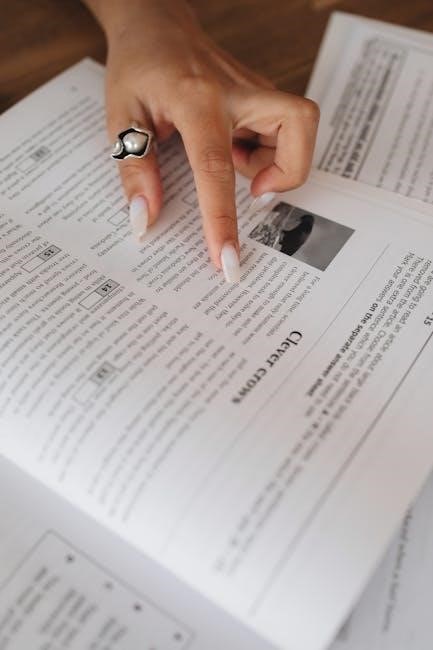
Symbolism in the Novel
The Conch Shell: Symbol of Order and Democracy
The Beast: Representation of Fear and the Unknown
The Island: A Microcosm of Society

The Lord of the Flies: Symbol of Savagery and Corruption

Themes and Motifs
The Impact of Isolation on Human Behavior
The Role of Religion and Spirituality
The Significance of the “Beast” as a Motif

Study Tips and Resources
How to Approach Reading the Novel
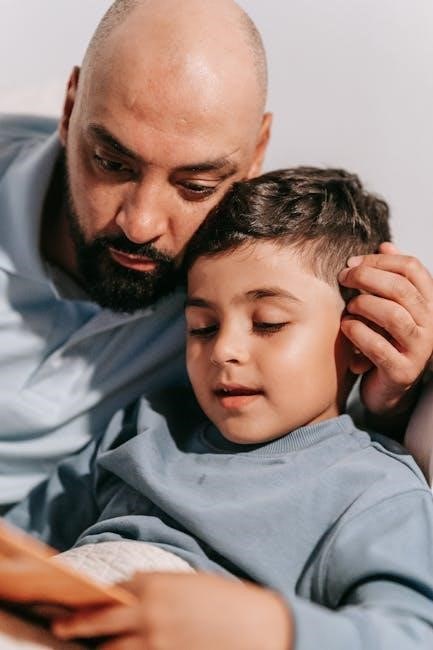
Key Quotes and Their Meanings
Recommended Study Guides and Summaries
Essay Topics and Discussion Questions

Final Thoughts on the Novel’s Significance
Reflection on the Relevance of Lord of the Flies Today

